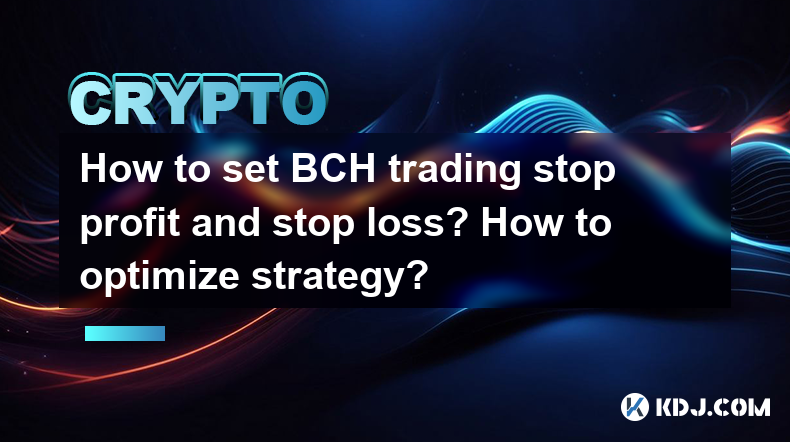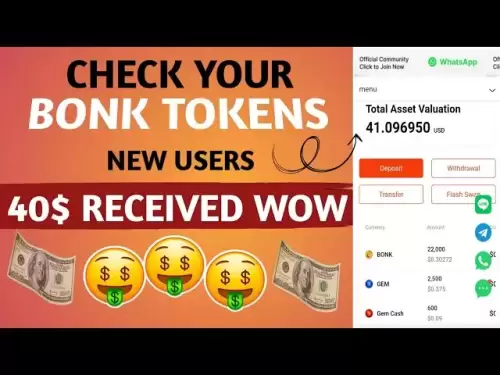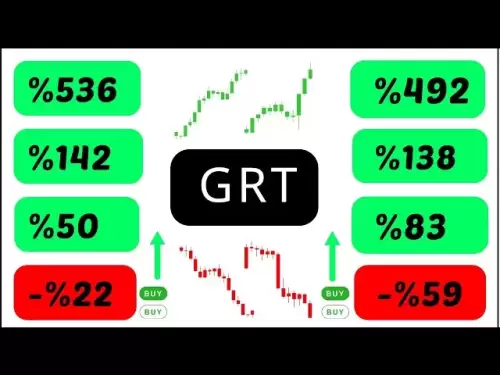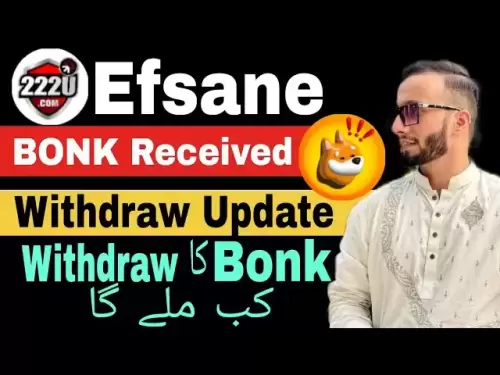-
 Bitcoin
Bitcoin $107,467.9126
1.26% -
 Ethereum
Ethereum $2,447.5288
-0.12% -
 Tether USDt
Tether USDt $1.0005
0.00% -
 XRP
XRP $2.1921
0.13% -
 BNB
BNB $647.2897
0.50% -
 Solana
Solana $144.8627
-0.37% -
 USDC
USDC $0.9996
-0.03% -
 TRON
TRON $0.2732
0.10% -
 Dogecoin
Dogecoin $0.1652
-0.18% -
 Cardano
Cardano $0.5700
-2.87% -
 Hyperliquid
Hyperliquid $37.0274
-1.81% -
 Bitcoin Cash
Bitcoin Cash $484.6957
0.19% -
 Sui
Sui $2.7354
-2.19% -
 Chainlink
Chainlink $13.1727
-1.49% -
 UNUS SED LEO
UNUS SED LEO $8.9978
-0.04% -
 Stellar
Stellar $0.2421
-2.33% -
 Avalanche
Avalanche $17.5633
-3.51% -
 Toncoin
Toncoin $2.8476
-1.94% -
 Shiba Inu
Shiba Inu $0.0...01166
-0.56% -
 Litecoin
Litecoin $85.1071
0.09% -
 Hedera
Hedera $0.1502
-2.96% -
 Monero
Monero $310.2774
-1.64% -
 Dai
Dai $0.9999
-0.01% -
 Polkadot
Polkadot $3.3584
-1.88% -
 Ethena USDe
Ethena USDe $1.0003
-0.04% -
 Bitget Token
Bitget Token $4.4443
2.90% -
 Pi
Pi $0.6242
14.04% -
 Uniswap
Uniswap $6.9774
-2.86% -
 Pepe
Pepe $0.0...09535
-5.05% -
 Aave
Aave $256.7574
-3.35%
How to set BCH trading stop profit and stop loss? How to optimize strategy?
To manage risk and maximize returns in BCH trading, set stop profit and stop loss orders based on thorough market analysis and adjust them as conditions change.
May 06, 2025 at 11:15 am

Setting up stop profit and stop loss orders for Bitcoin Cash (BCH) trading is crucial for managing risk and maximizing potential returns. This article will guide you through the process of setting these orders and provide strategies to optimize your BCH trading approach.
Understanding Stop Profit and Stop Loss Orders
Stop profit and stop loss orders are essential tools for traders to automatically manage their positions. A stop profit order, also known as a take-profit order, is set to sell an asset when it reaches a certain profit level. Conversely, a stop loss order is set to sell an asset when it reaches a predetermined loss level, helping to limit potential losses.
To effectively use these orders, it's important to understand the market dynamics of BCH and how these orders can be tailored to your trading strategy.
Setting Up Stop Profit Orders for BCH
Setting a stop profit order for BCH involves determining the price level at which you want to secure your profits. Here’s how to set up a stop profit order on a typical trading platform:
- Log into your trading platform and navigate to the BCH trading pair you are interested in.
- Select the 'Orders' or 'Trade' section to access the order placement interface.
- Choose 'Sell' for the BCH you hold.
- Select 'Stop-Limit' or 'Take-Profit' order type, depending on the platform's terminology.
- Set the 'Trigger Price' at which you want the order to activate. This is the price at which your BCH will be sold to secure profit.
- Set the 'Limit Price' slightly below the trigger price to ensure the order is executed. This is the price at which your BCH will actually be sold.
- Enter the amount of BCH you want to sell.
- Review and submit the order.
For example, if you bought BCH at $500 and want to secure a 20% profit, you might set the trigger price at $600 and the limit price at $595.
Setting Up Stop Loss Orders for BCH
A stop loss order for BCH helps protect your investment by automatically selling your assets if the price drops to a certain level. Here’s how to set up a stop loss order:
- Log into your trading platform and go to the BCH trading pair.
- Navigate to the 'Orders' or 'Trade' section.
- Choose 'Sell' for the BCH you hold.
- Select 'Stop-Limit' or 'Stop-Loss' order type.
- Set the 'Trigger Price' at which you want the order to activate. This is the price at which your BCH will be sold to limit losses.
- Set the 'Limit Price' slightly above the trigger price to ensure the order is executed. This is the price at which your BCH will actually be sold.
- Enter the amount of BCH you want to sell.
- Review and submit the order.
For example, if you bought BCH at $500 and want to limit your loss to 10%, you might set the trigger price at $450 and the limit price at $455.
Optimizing Your BCH Trading Strategy
Optimizing your BCH trading strategy involves more than just setting stop profit and stop loss orders. Here are some key considerations:
Market Analysis
Conduct thorough market analysis before setting your orders. This includes studying BCH price charts, understanding market trends, and keeping an eye on news that could affect BCH prices. Use technical indicators like moving averages, RSI, and MACD to identify potential entry and exit points.
Position Sizing
Determine the appropriate position size based on your risk tolerance and trading capital. A common rule of thumb is to risk no more than 1-2% of your trading capital on a single trade. This helps manage overall risk and ensures that a single loss won’t significantly impact your portfolio.
Adjusting Orders
Be prepared to adjust your stop profit and stop loss orders as market conditions change. If BCH is performing well and you want to let your profits run, consider moving your stop loss to break even or a small profit. Conversely, if the market becomes volatile, tighten your stop loss to protect your gains.
Backtesting
Backtest your trading strategy using historical BCH data to see how it would have performed in the past. This can help you refine your entry and exit points and improve your overall strategy. Many trading platforms offer backtesting tools or you can use specialized software.
Monitoring and Managing Your Trades
Once your stop profit and stop loss orders are set, it’s important to monitor your trades regularly. Market conditions can change rapidly, and you may need to adjust your orders accordingly. Here are some tips for effective trade management:
- Use trading alerts to stay informed about significant price movements or when your orders are triggered.
- Keep a trading journal to record your trades, including the rationale behind setting specific stop profit and stop loss levels. This can help you learn from past trades and improve future strategies.
- Stay disciplined and stick to your trading plan. Emotional decisions can lead to poor trading outcomes.
Frequently Asked Questions
Q: Can I set multiple stop profit and stop loss orders for the same BCH position?
A: Yes, some trading platforms allow you to set multiple orders for the same position. This can be useful for implementing a tiered exit strategy, where you sell portions of your position at different price levels.
Q: What happens if the BCH price gaps through my stop loss order?
A: If the BCH price gaps through your stop loss order, meaning it moves from above your stop loss price to below it without trading at your specified stop loss price, your order may be executed at the next available price. This is known as slippage and can result in a larger loss than anticipated.
Q: How often should I adjust my stop profit and stop loss orders?
A: The frequency of adjusting your stop profit and stop loss orders depends on your trading strategy and market volatility. In highly volatile markets, you may need to adjust your orders more frequently to protect your gains or limit losses. In more stable markets, less frequent adjustments may be sufficient.
Q: Is it better to use a percentage-based or fixed amount for setting stop profit and stop loss orders?
A: Both methods have their merits. A percentage-based approach can help maintain consistency across different trades, while a fixed amount may be more suitable if you have a specific profit or loss threshold in mind. Choose the method that aligns best with your overall trading strategy and risk management goals.
Disclaimer:info@kdj.com
The information provided is not trading advice. kdj.com does not assume any responsibility for any investments made based on the information provided in this article. Cryptocurrencies are highly volatile and it is highly recommended that you invest with caution after thorough research!
If you believe that the content used on this website infringes your copyright, please contact us immediately (info@kdj.com) and we will delete it promptly.
- Pi Coin Price Prediction: June 26 - Will It Break $0.70?
- 2025-06-26 09:05:13
- Tokenization Takes Flight: Cross-Border Transactions Soar to New Heights
- 2025-06-26 08:30:12
- Midnight Airdrop: NIGHT Tokens and the Cardano-XRP Connection
- 2025-06-26 08:50:13
- DRML Miner & USDC: Cloud Mining Revolution in '25
- 2025-06-26 09:05:13
- DRML Miner, USDC, and Cloud Mining: What's the Buzz in 2025?
- 2025-06-26 09:30:12
- Barclays, Crypto, and Credit Cards: A Shifting Landscape
- 2025-06-26 09:10:14
Related knowledge

How to customize USDT TRC20 mining fees? Flexible adjustment tutorial
Jun 13,2025 at 01:42am
Understanding USDT TRC20 Mining FeesMining fees on the TRON (TRC20) network are essential for processing transactions. Unlike Bitcoin or Ethereum, where miners directly validate transactions, TRON uses a delegated proof-of-stake (DPoS) mechanism. However, users still need to pay bandwidth and energy fees, which are collectively referred to as 'mining fe...

USDT TRC20 transaction is stuck? Solution summary
Jun 14,2025 at 11:15pm
Understanding USDT TRC20 TransactionsWhen users mention that a USDT TRC20 transaction is stuck, they typically refer to a situation where the transfer of Tether (USDT) on the TRON blockchain has not been confirmed for an extended period. This issue may arise due to various reasons such as network congestion, insufficient transaction fees, or wallet-rela...

How to cancel USDT TRC20 unconfirmed transactions? Operation guide
Jun 13,2025 at 11:01pm
Understanding USDT TRC20 Unconfirmed TransactionsWhen dealing with USDT TRC20 transactions, it’s crucial to understand what an unconfirmed transaction means. An unconfirmed transaction is one that has been broadcasted to the blockchain network but hasn’t yet been included in a block. This typically occurs due to low transaction fees or network congestio...

How to check USDT TRC20 balance? Introduction to multiple query methods
Jun 21,2025 at 02:42am
Understanding USDT TRC20 and Its ImportanceUSDT (Tether) is one of the most widely used stablecoins in the cryptocurrency market. It exists on multiple blockchain networks, including TRC20, which operates on the Tron (TRX) network. Checking your USDT TRC20 balance accurately is crucial for users who hold or transact with this asset. Whether you're sendi...

What to do if USDT TRC20 transfers are congested? Speed up trading skills
Jun 13,2025 at 09:56am
Understanding USDT TRC20 Transfer CongestionWhen transferring USDT TRC20, users may occasionally experience delays or congestion. This typically occurs due to network overload on the TRON blockchain, which hosts the TRC20 version of Tether. Unlike the ERC20 variant (which runs on Ethereum), TRC20 transactions are generally faster and cheaper, but during...

The relationship between USDT TRC20 and TRON chain: technical background analysis
Jun 12,2025 at 01:28pm
What is USDT TRC20?USDT TRC20 refers to the Tether (USDT) token issued on the TRON blockchain using the TRC-20 standard. Unlike the more commonly known ERC-20 version of USDT (which runs on Ethereum), the TRC-20 variant leverages the TRON network's infrastructure for faster and cheaper transactions. The emergence of this version came as part of Tether’s...

How to customize USDT TRC20 mining fees? Flexible adjustment tutorial
Jun 13,2025 at 01:42am
Understanding USDT TRC20 Mining FeesMining fees on the TRON (TRC20) network are essential for processing transactions. Unlike Bitcoin or Ethereum, where miners directly validate transactions, TRON uses a delegated proof-of-stake (DPoS) mechanism. However, users still need to pay bandwidth and energy fees, which are collectively referred to as 'mining fe...

USDT TRC20 transaction is stuck? Solution summary
Jun 14,2025 at 11:15pm
Understanding USDT TRC20 TransactionsWhen users mention that a USDT TRC20 transaction is stuck, they typically refer to a situation where the transfer of Tether (USDT) on the TRON blockchain has not been confirmed for an extended period. This issue may arise due to various reasons such as network congestion, insufficient transaction fees, or wallet-rela...

How to cancel USDT TRC20 unconfirmed transactions? Operation guide
Jun 13,2025 at 11:01pm
Understanding USDT TRC20 Unconfirmed TransactionsWhen dealing with USDT TRC20 transactions, it’s crucial to understand what an unconfirmed transaction means. An unconfirmed transaction is one that has been broadcasted to the blockchain network but hasn’t yet been included in a block. This typically occurs due to low transaction fees or network congestio...

How to check USDT TRC20 balance? Introduction to multiple query methods
Jun 21,2025 at 02:42am
Understanding USDT TRC20 and Its ImportanceUSDT (Tether) is one of the most widely used stablecoins in the cryptocurrency market. It exists on multiple blockchain networks, including TRC20, which operates on the Tron (TRX) network. Checking your USDT TRC20 balance accurately is crucial for users who hold or transact with this asset. Whether you're sendi...

What to do if USDT TRC20 transfers are congested? Speed up trading skills
Jun 13,2025 at 09:56am
Understanding USDT TRC20 Transfer CongestionWhen transferring USDT TRC20, users may occasionally experience delays or congestion. This typically occurs due to network overload on the TRON blockchain, which hosts the TRC20 version of Tether. Unlike the ERC20 variant (which runs on Ethereum), TRC20 transactions are generally faster and cheaper, but during...

The relationship between USDT TRC20 and TRON chain: technical background analysis
Jun 12,2025 at 01:28pm
What is USDT TRC20?USDT TRC20 refers to the Tether (USDT) token issued on the TRON blockchain using the TRC-20 standard. Unlike the more commonly known ERC-20 version of USDT (which runs on Ethereum), the TRC-20 variant leverages the TRON network's infrastructure for faster and cheaper transactions. The emergence of this version came as part of Tether’s...
See all articles
























































































